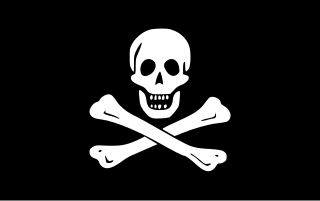
Piracy is an act of robbery or criminal violence by ship or boat-borne attackers upon another ship or a coastal area, typically with the goal of stealing cargo and other valuable goods. Those who conduct acts of piracy are called pirates, and vessels used for piracy are called pirate ships. The earliest documented instances of piracy were in the 14th century BC, when the Sea Peoples, a group of ocean raiders, attacked the ships of the Aegean and Mediterranean civilisations. Narrow channels which funnel shipping into predictable routes have long created opportunities for piracy, as well as for privateering and commerce raiding.

An armed merchantman is a merchant ship equipped with guns, usually for defensive purposes, either by design or after the fact. In the days of sail, piracy and privateers, many merchantmen would be routinely armed, especially those engaging in long distance and high value trade. In more modern times, auxiliary cruisers were used offensively as merchant raiders to disrupt trade chiefly during both World War I and World War II, particularly by Germany.

The East India Squadron, or East Indies Squadron, was a squadron of American ships that existed in the nineteenth century. It focused on protecting American interests in the Far East, while the Pacific Squadron concentrated on the western coasts of the Americas and the South Pacific Ocean. Its duties included the Yangtze River Patrol in China. The East India Squadron was established in 1835 and existed until it became part of the Asiatic Squadron in 1868.

Shap-ng-tsai was a Chinese pirate active in the South China Sea from about 1845 to 1859. He was one of the two most notorious South China Sea pirates of the era, along with Chui A-poo. He commanded about 70 junks stationed at Dianbai, about 180 miles west of Hong Kong. Coastal villages and traders paid Shap-ng-tsai protection money so they would not be attacked. Chinese naval ships that pursued the pirate were captured and their officers taken captive and held for ransom. The Chinese government offered him a pardon and the rank of officer in the military at first he did not accept, but he eventually did so to avoid legal ramifications.
The Battle of Liaoluo Bay took place in 1633 off the coast of Fujian, China; involving the Dutch East India Company (VOC) and the Chinese Ming dynasty's navies. The battle was fought at the crescent-shaped Liaoluo Bay that forms the southern coast of the island of Kinmen. A Dutch fleet under Admiral Hans Putmans was attempting to control shipping in the Taiwan Strait, while the southern Fujian sea traffic and trade was protected by a fleet under Brigadier General Zheng Zhilong. This was the largest naval encounter between Chinese and European forces before the Opium Wars two hundred years later.
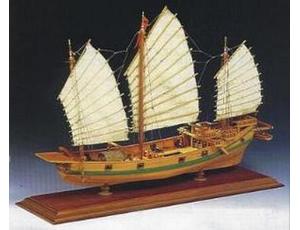
The Battle of Ty-ho Bay was a significant naval engagement in 1855 involving the United Kingdom and United States against Chinese pirates. The action off Tai O, Hong Kong was to rescue captured merchant vessels, held by a fleet of armed war-junks. British and American forces defeated the pirates in one of the last major battles between Chinese pirate fleets and western navies. It was also one of the first joint operations undertaken by British and American forces.

The Battle of Cape Fear River, also known as the Battle of the Sandbars, was fought in September 1718 between two sloops from the Province of South Carolina led by William Rhett and a group of pirate ships under the command of Stede Bonnet. Rhett's sloops defeated the pirates in the Cape Fear River estuary which led to Bonnet's eventual execution by hanging in Charleston, South Carolina.

The Battle of Cape Lopez was fought in early 1722 during the Golden Age of Piracy. A Royal Navy ship of the line under the command of Captain Chaloner Ogle defeated the pirate ship of Bartholomew Roberts off the coast of Gabon, West Africa.

The Battle of the Leotung was a British victory against an overwhelming fleet of Chinese pirate ships. In 1855 the Royal Navy launched a series of operations into the Gulf of Leotung and surrounding area to suppress piracy, several battles were fought and hundreds of pirates were killed.

The Battle of Tonkin River was a major naval battle fought in northern Vietnam between the pirates of Shap Ng-tsai and the British Royal Navy with aid from the Qing Chinese navy and the Tonkinese. The 1849 expedition led to the destruction of Shap Ng-tsai's fleet and the loss of over 2,000 men. The battle occurred over a three-day period at the mouth of the Tonkin River, near present-day Hai Phong.

The Battle of Tysami was a military engagement involving a warship from the British China Squadron and the Chinese pirates of Chui A-poo. It was fought in September 1849 off Tysami, Harlaim Bay, China, and ended with a Royal Navy victory. It was also the precursor engagement to the larger Battle of Pinghoi Creek where Chui A-poo's fleet was destroyed.

The action of 9 November 1822 was a naval battle fought between the United States Navy schooner USS Alligator and a squadron of three pirate schooners off the coast of Cuba during the Navy's West Indies anti-piracy operation. Fifteen leagues from Matanzas, Cuba, a large band of pirates captured several vessels and held them for ransom. Upon hearing of the pirate attacks, Alligator under Lieutenant William Howard Allen rushed to the scene to rescue the vessels and seize the pirates.
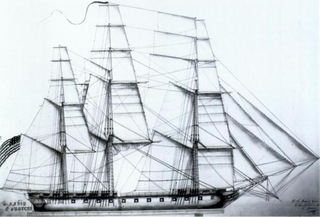
The West Indies Squadron, or the West Indies Station, was a United States Navy squadron that operated in the West Indies in the early nineteenth century. It was formed due to the need to suppress piracy in the Caribbean Sea, the Antilles and the Gulf of Mexico region of the Atlantic Ocean. This unit later engaged in the Second Seminole War until being combined with the Home Squadron in 1842. From 1822 to 1826 the squadron was based out of Saint Thomas Island until the Pensacola Naval Yard was constructed.

The New Orleans Squadron or the New Orleans Station was a United States Navy squadron raised out of the growing threat the United Kingdom posed to Louisiana during the War of 1812. The first squadron consisted of over a dozen vessels and was mostly defeated during the war. Afterward, new ships were stationed at New Orleans which engaged in counter-piracy operations for over twenty years. The New Orleans Squadron was eventually merged with the Home Squadron.
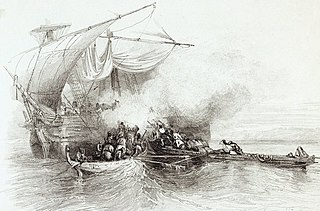
Aegean Sea anti-piracy operations began in 1825 when the United States government dispatched a squadron of ships to suppress Greek piracy in the Aegean Sea. The Greek civil wars of 1824–1825 and the decline of the Hellenic Navy made the Aegean quickly become a haven for pirates who sometimes doubled as privateers.

The Battle of Doro Passage was a naval engagement during the United States Navy's operation against Greek pirates in the Aegean Sea. On October 16, 1827 a British merchant ship was attacked by pirates in Doro Passage off the islands of Andros and Negroponte but was retaken by American sailors.

The West Indies Anti-Piracy Operations were a series of military operations and engagements undertaken by the United States Navy against pirates in and around the Antilles. Between 1814 and 1825, the American West Indies Squadron hunted pirates on both sea and land, primarily around Cuba and Puerto Rico. After the capture of Roberto Cofresi in 1825, acts of piracy became rare, and the operation was considered a success, although limited occurrences went on until slightly after the start of the 20th century.

Operation Ocean Shield was NATO's contribution to Operation Enduring Freedom – Horn of Africa (OEF-HOA), an anti-piracy initiative in the Indian Ocean, Guardafui Channel, Gulf of Aden and Arabian Sea. It follows the earlier Operation Allied Protector. Naval operations began on 17 August 2009 after being approved by the North Atlantic Council, the program was terminated on 15 December 2016 by NATO. Operation Ocean Shield focused on protecting the ships of Operation Allied Provider, which transported relief supplies as part of the World Food Programme's mission in the region. The initiative also helped strengthen the navies and coast guards of regional states to assist in countering pirate attacks. Notably, the Italian Military Support Base in Djibouti contributed to anti-piracy efforts as part of NATO's Operation Ocean Shield, utilizing naval vessels such as the ITS Mimbelli and ITS San Marco in the Gulf of Aden, Indian Ocean, and off the coast of Somalia. Additionally, China, Japan and South Korea sent warships to participate in these activities.
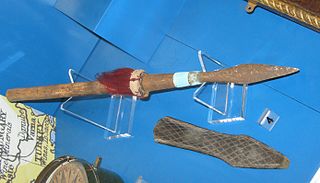
The Irene incident of 1927 was a British anti-piracy operation in China during the first half of the 20th century. In an attempt to surprise the pirates of Bias Bay, about sixty miles from British Hong Kong, Royal Navy submarines attacked the steamship SS Irene, of the China Merchants Steam Navigation Company, which had been taken over by the pirates on the night of 19 October. The British were successful in thwarting the hijacking though they sank the ship.
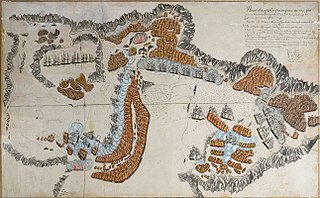
The Battle of the Tiger's Mouth was a series of engagements between a Portuguese flotilla stationed in Macau, and the Red Flag Fleet of the Chinese pirate Ching Shih, led by her second-in-command, Cheung Po Tsai - known to the Portuguese as Cam Pau Sai or Quan Apon Chay. Between September 1809 and January 1810, the Red Flag Fleet suffered several defeats at the hands of the Portuguese fleet led by José Pinto Alcoforado e Sousa, within the Humen Strait - known to the Portuguese as the Boca do Tigre - until finally surrendering formally in February 1810. After her fleet surrendered, Ching Shih surrendered herself to the Qing government in exchange for a general pardon, putting an end to her career of piracy.





















